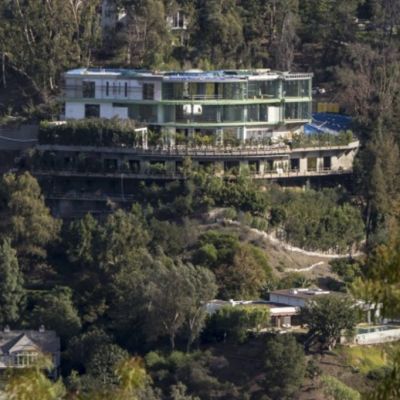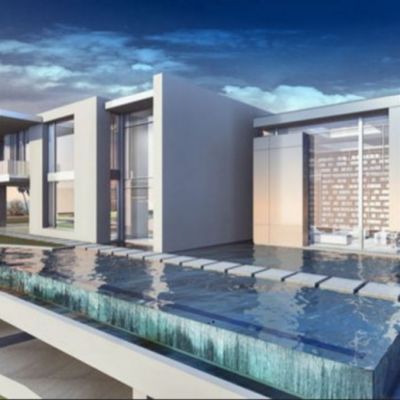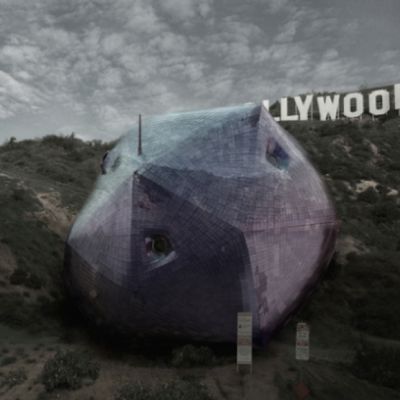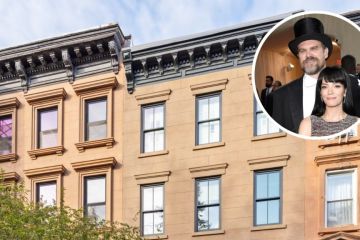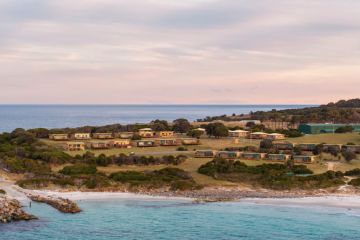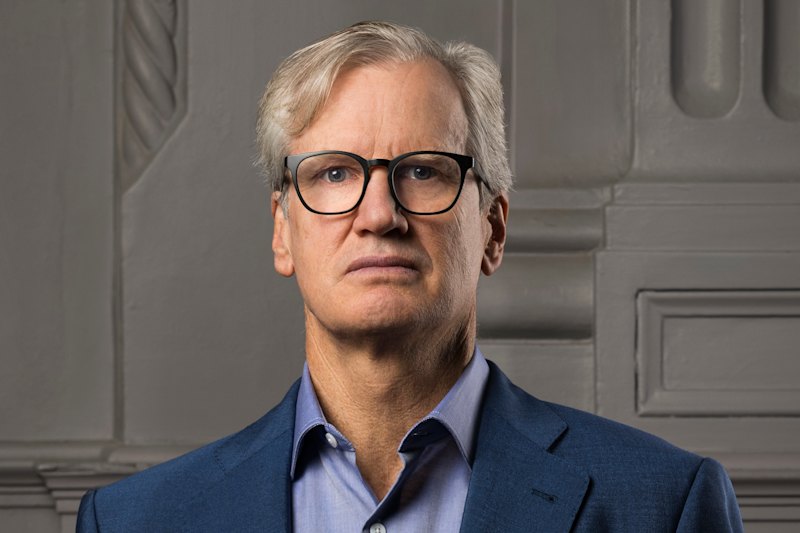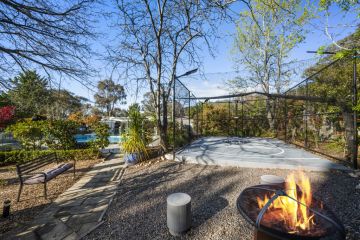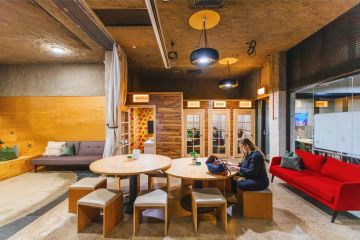Celebrity developer Mohamed Hadid faces charges over 9144 square metre Bel-Air mansion

Three years ago, Los Angeles city officials demanded that builders halt work on a colossal mansion in the rarefied hills of Bel-Air.
The massive home being erected on Strada Vecchia Road was bigger and taller than allowed, city prosecutors said.
It also included entire areas – bedrooms, decks and a vast IMAX theatre – that the city says were never approved.
Neighbours said they feared for their safety, complaining that the hillside above their homes had been dangerously destabilised.
City officials yanked the building permits. Luxury developer Mohamed Hadid was slapped with criminal charges.
The case drew international attention with its cocktail of criminal accusations, real estate excess and star power in Hadid, who has appeared on “The Real Housewives of Beverly Hills” and whose daughters Gigi and Bella have graced magazine covers.
Now, after more than a year of legal wrangling, Hadid is expected to go to trial as soon as this week. But the fate of the roughly 9100 square-metre mega-mansion remains unclear.
“You still have this horrendous thing hanging over the hillside,” said Joseph Horacek, an entertainment lawyer who repeatedly lodged complaints as the home was under construction. He has nicknamed the unfinished building, which towers over his winding street below, the “Starship Enterprise.”
The question goes to the heart of how L.A. should hold real estate developers accountable. Hadid and other defendants tied to the project face three misdemeanor charges, each punishable with up to six months in county jail and a fine of up to $1,000, said Rob Wilcox, a spokesman for City Attorney Mike Feuer.
Critics also want the bulk of the structure torn down, arguing that if it is allowed to remain it will send a troubling message to wealthy developers willing to break the rules.
Hadid declined to be interviewed, instead providing written answers to questions through an attorney. In the past, his legal team has argued that Hadid was not the one responsible for getting permits. He has scoffed at the idea of tearing down the mansion, reportedly calling it “insane.”
“Demolish this house? Never!” Hadid was quoted in Town and Country Magazine, adding, “This house will last forever. Bel-Air will fall before this will.”
Hadid, 68, is a stylish figure known for building grandiose estates such as the Palazzo di Amore, a Beverly Hills villa that was listed for $US195 million ($265 million) and boasted a 1393 square-metre entertainment complex including a ballroom with a revolving dance floor.
His daughters are famous supermodels and his fiancee now stars on an E! reality show about women engaged or wed to wealthy men. His Instagram account, which has more than 600,000 followers, bills him as “Real Estate Developer, Proud Father of 5, Olympian ’92, Artist and Creator of my own Dream World.”
At a May hearing in a Van Nuys courtroom, attorney Robert Shapiro said Hadid was seeking to get loans and complete the house so that it did not continue to languish.
He sketched out a troubling scenario for the judge as he argued for more time for Hadid to work things out with the city building department rather than heading to trial: the mansion continuing to sit, unfinished, for years.
Last year, another one of Hadid’s attorneys, Donald Re, warned Feuer in a letter that lenders might foreclose on the building if Hadid were convicted, making it impossible for him to bring the building in line with city rules.
Hadid has turned in revised plans for a roughly 2787 square-metre building, angling for new permits to finish it. Shapiro argued that the best thing for everyone would be to complete the house.
But city records indicate that the revised plans have not yet received a long list of clearances from the building department. In a lengthy set of notes, a plan checker pointed out that the Strada Vecchia plans were still not in line with city rules that restrict hillside construction, grading and building height.
Bruce Rudman, an attorney who represents Hadid in civil matters, nonetheless said that the plans were realistic, writing in an email that “corrections are often requested.” At the May hearing, Deputy Chief City Attorney Tina Hess told the judge that based on what she had heard from the building department, it could take “the better part of a year” before permits are issued.
Hess also cast doubt on the idea that Hadid would not be able to finance the construction, saying that he had been proceeding with other projects.
Horacek argued that the revised plans were merely a stalling tactic to try to delay the trial. He and other critics are skeptical Hadid can make the building match city requirements without tearing most or all of it down.
“The only path that I see is demolition,” said attorney Victor De la Cruz, who represents the Horaceks. Although Hadid has turned in revised plans that remove some unapproved features, “he is trying to keep the overwhelming majority of the work that he already illegally constructed.”
“It’s too little and it’s way too late,” De la Cruz concluded.
Simply removing the unapproved areas might not be so simple: City records indicate that many of the unapproved sections sit underneath other parts of the building, including an “entire story … created below basement level.”
Los Angeles has also imposed new, stricter rules for building in Bel-Air since Hadid started construction, which could complicate efforts to legalise the home. Under those rules, houses bigger than 17,500 square feet must undergo a more rigorous review that requires environmental studies and can include a public hearing.
Rudman, in response to questions about those potential challenges, wrote that “everything will be performed with the guidance of the city and project engineers.”
Horacek and other critics insist that the city should not treat the Strada Vecchia case as a matter of redoing some paperwork. City prosecutors say Hadid and his business associates repeatedly ignored the rules, including tearing down an existing home on the site without a permit and improperly grading the slope with illegal and hazardous cuts.
Rudman countered that Hadid had been working to address city demands and would ensure that the home was in compliance. He said in an email that retaining walls, interior walls and other features targeted by the city had already been demolished, and that “nonstructural” parts of the lower decks had also been removed, making them unusable.
Rudman also emphasised that the building had been inspected over and over by the city while it was under construction.
It is a point that lawyers defending Hadid have raised before: Re wrote last year that the theatre – which he said was “simply a room with theater-style tiered concrete levels” – had previously appeared on aerial photographs delivered to the city.
“There is no possibility that it was missed by the inspectors at the time of construction,” Re wrote.
Neighbours have argued that Los Angeles could eventually take matters into its own hands. Under the Municipal Code, the city can demand that a building be torn down if it is deemed a nuisance. City rules also state that if the building department believes that a structure poses an immediate danger, it can be torn down “without an order or notice of any kind whatsoever.”
Rudman responded in an email that “there is no merit to any claim the building is a nuisance.”
We recommend
We thought you might like
States
Capital Cities
Capital Cities - Rentals
Popular Areas
Allhomes
More
